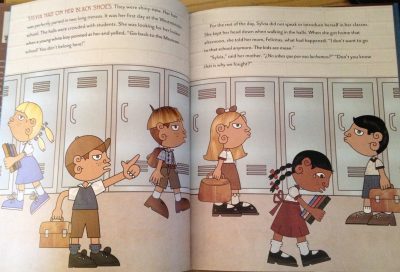Author and Illustrator: Duncan Tonatiuh
Publisher and Year: Abrams Books for Young Readers, 2014
Number of pages: 40
Genre: Biography
This story is about desegregation in 1940s California, anti-Latinx racism, and how one one girl’s family decided to never give up until their children could go to the same school as the white children. After being turned away from attending the beautiful school her light-skinned cousins were allowed to attend, Sylvia Mendez and her siblings are forced to go to the Mexican school in the same area, which has much fewer resources and much less money. Their father, asking why his children cannot go to the nice school, was met with lies or silence from every administrator he talked to. The family reached out to friends and community members, and eventually they decided to file a lawsuit against the public school system. The judge ultimately ruled in their favor, allowing the Mendez children and children of any racial or ethnic background to attend the same schools as the white children in their community. Sylvia at first was fearful of the racism and prejudice some white classmates displayed toward her, but by the end of the first school day she had found friends and felt safe enough to continue her education there, knowing that her family’s efforts had paid off.
In this book, one significant picturebook code that appears time and again is the significance of Sylvia Mendez’s position on the page. From the start, she is depicted as being lower on the page than the white children, or looking down while white children look at her. This speaks to the anti-Latinx racism that was prevalent in the 1940s; Sylvia was deemed inferior and made to feel like she was less. While at the Mexican school she and her classmates are sitting at the bottom of the image, representing the fact that they were powerless to improve their situation. As the story progresses however, and the family goes to the court proceedings, Sylvia moves farther up on the page in comparison to the White people. It is a subtler move, but by the end of the story, she is on the playground, at the same level as her White friend and even above another white boy on the opposite page. Sylvia’s position on the page is symbolic of her social standing compared to her white peers, and at the end, she is finally equal.
The illustrations in this book were hand-drawn and then collaged and colored digitally, and the characters are drawn in the author’s distinctive style, borrowing from Mayan themes in their facial structure and body shape. There is also a glossary of legal terms in the back of the book.


